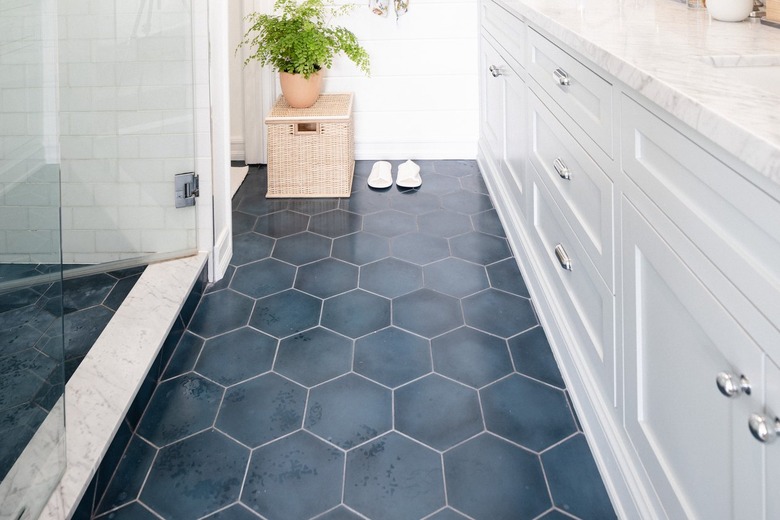How To Choose A Floor Tile Color
Colored tile is a fun and timeless way to add brightness and personality to rooms, from the kitchen to the bathroom. No matter what color tile you choose, the durability of the material will ensure that the interior lasts for a long time. This is why it's essential to choose a tile color that you will want to look at again and again. Consider the way you want your bathroom to feel, and then consider that it will feel that way for a very long time before you decide on your final selection.
How to Tile Shop
How to Tile Shop
Choosing the right tile for your living space comes down to several factors. Not only do you need to select a tile color that works well for your space, but you also need to select the texture and the material. For example, it is best to use porcelain tile in high traffic areas because it is durable, glazed and less likely to show wear.
Textured tiles, on the other hand, are good in the shower because they are less likely to become slippery when wet. Ceramic tiles should only be used indoors because they are porous and can absorb water, causing mildew, mold and cracking.
Once you've settled on the kind of tile you need for your space, the next thing to do is reflect on how you want your space to feel. Do you want to give an open, relaxing and quiet feel to space? Then, plan on shopping for tiles on the lighter or more neutral end of the spectrum. If you're looking to create a sense of energy and movement in your space, on the other hand, you'll want to select tiles in a color that contrasts with the rest of the decor elements in the space.
Choosing Tile Color
Choosing Tile Color
The size of the room you are tiling is also a factor in the decisions you'll make about color. If you are tiling a small space, avoid dark-colored tiles. Although they can add warmth to rooms and present visual interest, dark tiles, like deep green subway tile, for example, can make the space feel even smaller. On the hand, cream or off-white colored tiles reflect light, making spaces appear larger.
If you are tiling a kitchen or entryway floor, it's a good idea to go with a darker tile color. Terra cotta, brown, dark gray and navy blue tiles are a good choice for rooms that see a lot of foot traffic, and that could use a strong anchoring presence. The same is true of a large bathroom. Scalloped tiles or subway tiles in bold colors like hunter green, navy blue or even black can make a large bathroom feel more cozy and elegant.
Bright colors that alternate can also add drama and even glamour to a bathroom. Dark green, gold-colored or bright red tiles help to warm up your space, whereas beige, white and light gray are cooling. If you want the tile to fade into the background and give your space a muted feeling, choose a matte white, beige, cream or off-white color, which will allow other design elements to stand out.
Placement Matters
Placement Matters
In bathrooms, the floor and the walls are the areas most generally tiled, although you can feel free to play with the areas in different ways. For example, tiling the bathroom walls a darker color and leaving the floors white can create an interesting contrast in the space.
In a kitchen, leaving the floor tiles a matte neutral color like a dark gray or brown allows you to have a lighter and brighter countertop and backsplash while still making space feel grounded. Ultimately, choosing floor and countertop tiles separately in a kitchen space will keep things from looking monotonous and will create a nice flow.
